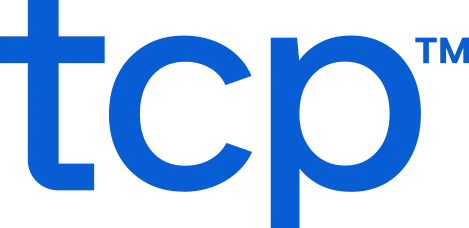What happens when a crew schedule goes wrong? When an engine company shows up one firefighter short, or a late call-out burns your overtime threshold before the week is even halfway through?
It’s a scenario no department wants to face, but it’s often caused by the same issue: outdated, manual scheduling.
In most industries, a missed shift creates stress — in a fire department, it can compromise safety. You’re managing complex rotations, certifications, fatigue limits, and 24/7 coverage while worrying about compliance with union rules and department policy.
This guide breaks down the top seven firefighter scheduling software tools of 2025, highlighting what makes each one stand out and how to choose the right fit for your department.
The shortlist of firefighter scheduling software
Fire service leaders should be battling emergencies, not spreadsheets and text chains. That’s where dedicated scheduling software for firefighter work schedules comes in.
Your department(s) face a handful of unique scheduling circumstances, from 24-hour shifts and Kelly shifts to mandatory training, callbacks, and complex staffing structures. You need the ability to automate shift rotations, manage certifications, handle call-outs, and maintain full coverage with less effort.
The right software helps you balance all of this while maintaining compliance, communication, and morale.
2025’s best firefighter scheduling tools:
- Aladtec (by TCP)
- inTime
- PowerTime (formerly PlanIt)
- CrewSense (Vector Solutions)
- eSchedule
- Hero Schedule
- ZoomShift
Each solution is compared below for ease of use, features, and what makes it stand out in real-world fire department operations.
1. Aladtec (by TCP Software)
Trusted, flexible scheduling for fire, EMS, corrections and public safety.
| Category | Details |
| Ease of Use | Mobile-friendly and intuitive interface for both command staff and line firefighters |
| Features | 24-hour shift scheduling, time-off management, certification tracking, call-out automation, fatigue monitoring |
| Standout Features | Custom rules for rotations and Kelly days, automatic alerts for coverage gaps, strong reporting tools |
| Reasons to Buy | • Built specifically for fire & EMS • Rule-based scheduling for complex rotations • Scales easily across multi-station operations |
| Reasons to Avoid | • Initial configuration required for custom shift templates • Works best with its built-in communication modules |
Why Aladtec stands out
Aladtec simplifies scheduling while helping maintain readiness and compliance.
Supervisors can post or approve shifts anywhere, and firefighters can swap or view schedules instantly. Despite its robust optionality, users boast about the simplicity and time savings in switching to Aladtec.
Rule-based automation enforces department policies, prevents coverage gaps, and supports the 24-hour rhythm of fire service life. For departments that need user friendliness without sacrificing capabilities, Aladtec is the clear choice.
2. inTime
Enterprise-grade scheduling for complex fire operations.
| Category | Details |
| Ease of Use | Highly configurable; best with a dedicated scheduling admin |
| Features | Overtime management, shift bidding, fatigue tracking, training, asset integration, and analytics dashboard |
| Standout Features | Built-in compliance tools, union rule enforcement, and powerful reporting |
| Reasons to Buy | • Ideal for multi-station and platoon operations • Deep compliance capabilities • Consolidates training and overtime management |
| Reasons to Avoid | • Longer onboarding for small departments • More complex interface without admin support |
Why inTime stands out
inTime is ideal for large or metropolitan fire departments. It automates staffing levels, fatigue rules, and union compliance while surfacing analytics to help chiefs plan resources accurately. The platform’s precision pays off in reduced risk and better transparency.
However, inTime’s level of precision comes with excess complexity. Smaller departments may find the system’s setup time and feature depth more than they need day to day, while the general interface requires more support than the solution may provide.
3. PowerTime (formerly PlanIt)
Comprehensive, purpose-built scheduling for fire and EMS departments.
| Category | Details |
| Ease of Use | Designed for public safety; straightforward setup and daily use |
| Features | Shift scheduling, overtime tracking, availability management, time-off requests, and communication tools |
| Standout Features | Built for 24/48, 48/96, and custom rotations, with robust messaging and time tracking |
| Reasons to Buy | • Tailored for fire & EMS • Affordable for departments of all sizes • Great combination of scheduling and communication |
| Reasons to Avoid | • Limited integrations beyond core scheduling tools • Reporting features are basic compared to enterprise systems |
Why PowerTime stands out
PowerTime is used by fire departments because of its simplicity, reliability, and fire-specific functionality. It handles everything from Kelly day automation to availability management, keeping teams connected through built-in communication tools.
It’s an okay middle-ground choice for departments that want scheduling without a steep learning curve. Its ease of use is a plus, but it may feel limited for departments that rely on complex scheduling data analysis or integrations.
4. Vector Solutions (CrewSense)
Purpose-built firefighter scheduling and call-out automation.
| Category | Details |
| Ease of Use | Built for fire & EMS; intuitive daily workflows |
| Features | Automated call-outs, overtime equalization, trade approvals, credential tracking, fatigue management |
| Standout Features | Text/voice callback automation, cloud roster visibility, badge-qualified shift assignment |
| Reasons to Buy | • Fire/EMS-specific design • Reliable for unpredictable staffing • Works for both large and small agencies |
| Reasons to Avoid | • Integrations require setup • Interface can feel dated Documented training and support frustrations |
Why Vector Solutions stands out
Vector Solutions automates call-outs, shift trades, and rest tracking — tasks that usually drain staff time. It’s proven across hundreds of fire agencies for improving coverage reliability and communication in fast-changing situations.
Some departments note that its interface feels dated, and deeper reporting or analytics may require additional configuration. Users also cite frustrating training malfunctions and support issues with renewals.
5. eSchedule
Streamlined scheduling for smaller fire departments.
| Category | Details |
| Ease of Use | Simple and intuitive with minimal onboarding |
| Features | Shift swaps, PTO requests, certification logs, payroll exports, and mobile access |
| Standout Features | Handles 24/48 and 48/96 rotations, Kelly days, and integrated timekeeping |
| Reasons to Buy | • Affordable and fast to deploy • Perfect for volunteer or combo departments • Reduces spreadsheet use instantly |
| Reasons to Avoid | • Limited rule automation Limited scheduling automations • Fewer integrations than enterprise tools |
Why eSchedule stands out
For smaller or rural departments, eSchedule is an accessible way to digitize scheduling and communication. Its rotation templates and certification logs provide all the essentials without excess complexity. That simplicity does come with limits — larger departments or those needing deep automation may outgrow its capabilities quickly.
6. Hero Schedule
Affordable scheduling for all fire department sizes.
| Category | Details |
| Ease of Use | Leans on user-friendly platform, minimal training needed |
| Features | 24/48 and 48/96 rotations, shift bidding, time-off workflows, mobile/desktop access |
| Standout Features | Color-coded rotation views, rapid setup, strong volunteer-staffing tools |
| Reasons to Buy | • Low-cost • Quick onboarding • Great for mixed volunteer/full-time agencies |
| Reasons to Avoid | • Limited compliance automation • Not ideal for large enterprise departments |
Why Hero Schedule stands out
Hero Schedule supports the most common fire-service shift types, making it easy to visualize rotations. It’s a solid, affordable choice for departments seeking efficiency without complexity. It’s budget-friendly but light on the advanced tools larger agencies often rely on.
7. ZoomShift
Simple, communication-focused scheduling for fire crews.
| Category | Details |
| Ease of Use | Extremely intuitive; ready out-of-the-box |
| Features | Shift scheduling, swap management, availability tracking, text/email/push notifications |
| Standout Features | Drag-and-drop interface, real-time schedule view, built-in alerts |
| Reasons to Buy | • Fast implementation • Strong internal communication tools • Ideal for small-to-mid-size stations |
| Reasons to Avoid | • Not built for fire-specific compliance • Lacks deep rule automation Insufficient reporting and analytics |
Why ZoomShift stands out
ZoomShift keeps things simple. It’s perfect for smaller or volunteer stations where visibility and communication are most important. Even without advanced automation, it eliminates scheduling confusion and saves hours each week.
The simplicity is appealing, but it lacks the rule-based automation, compliance, and reporting features public safety agencies often need. Additionally, offline capabilities seem to be lacking, which can be a liability in the field.
How to pick the right firefighter scheduling software
Choosing the right scheduling platform depends on your department’s size, staffing model, and operational priorities. Focus first on your top challenges, such as overtime control, training compliance, or coverage visibility.
Then, evaluate software based on how it handles:
- Rule-based scheduling for 24/48, 48/96, and Kelly days
- Certification and credential tracking
- Callback and open-shift automation
- Fatigue prevention and rest compliance
- Real-time visibility via mobile/web access
- Audit-ready reporting for compliance and budgeting
The best firefighter scheduling software shouldn’t be one you have to think about, which will make your operation calmer and safer, not more complicated.
Smarter scheduling keeps firefighters and communities safe
Firefighting is unpredictable. Your schedules don’t have to be.
With modern firefighter scheduling software, your department can reduce burnout, control overtime, and maintain full coverage without endless spreadsheets or last-minute texts. When every firefighter knows their role and every officer sees full coverage, your operation runs more effectively, and your community remains protected.
That’s where Aladtec by TCP Software makes a difference.
Built specifically for fire and EMS agencies, Aladtec combines rule-based scheduling, fatigue management, and seamless communication in one platform. It’s trusted by departments nationwide to simplify complex rotations, strengthen compliance, and keep teams connected — so you can focus less on logistics and more on protecting lives.
When your department has fewer errors and faster communication for scheduling, it means more time to focus on protecting lives in your community.
TCP Software’s employee scheduling and time and attendance solutions have the flexibility and scalability to suit your business and your employees, now and as you grow.
From TimeClock Plus, which automates even the most complex payroll calculations and leave management requests, to Humanity Schedule for dynamic employee scheduling that saves you time and money, we have everything you need to meet your organization’s needs, no matter how unique. Plus, with Aladtec, we offer 24/7 public safety scheduling solutions for your hometown heroes.
Ready to learn how TCP Software takes the pain out of employee scheduling and time tracking? Speak with an expert today.



